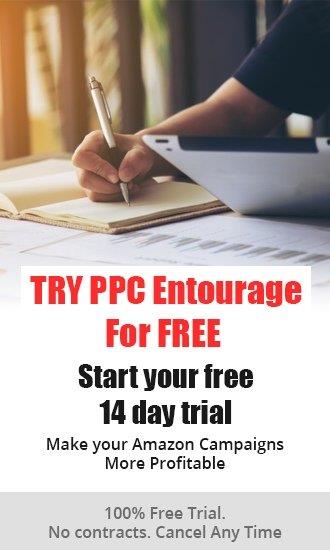In Part 3 of our series on How to Optimize Your PPC Campaigns, we're going to look at Negative Match Types and how you can use them to improve your Ad Spend efficiency.
We'll be looking at Negative Phrase, Negative ASINs and Negative Exact match types, and how to use them strategically to reduce your overall wasted Ad Spend.
Please be sure to watch Part 1 in this series: 8 Building Blocks for a Strong Foundation, and Part 2: 6 Bid Optimization Strategies That Reduce Wasted Ad Spend, if you haven't already done so.
What Are Amazon Negative Keywords?
Amazon Negative Keywords are the keywords that help improve the performance of PPC campaigns by refining targeting to a more relevant audience by preventing certain keywords from driving irrelevant traffic to the listing.
Using Negative Keywords provides sellers with these benefits:
- reduced wasted Ad Spend budget
- allocates Ad Spend budget towards relevant searches
- improves ad performance (relevant clicks)
- helps to target a relevant audience more likely to convert (higher ROI).
Negative Keywords can be added both at a campaign level and ad group level.
The campaign level Negative Keywords apply to all ad groups in the campaign, whereas ad group level Negative Keywords applies to all ads in that specific ad group. Sellers can add common terms to campaign Negative Keywords and specific terms to ad group Negative Keywords.
Negative Keyword Match Types
The Negative Keywords match types for Sponsored Product Ads are:
- Negative Phrase Match – this match type restricts ads from showing by finding unique words that are not leading to sales and eliminating them from search. There is a maximum limit of four words per negative keyword and 80 characters.
- Negative ASIN Match – allows sellers to add negative product targets to Auto campaigns.
- Negative Exact Match - this match type must exactly match the search term in order to block it. There is a maximum limit of ten words per negative keyword and 80 characters.
Action Steps for Each Negative Match Type
Negative Phrase Match
- Breakdown these search terms into two categories:
- profitable search terms (al of the search terms within your target zone ACoS), and
- high ACoS (search terms with a 60% ACoS or higher) or zero sales search terms (search terms that got a click but no sales).
- Break search terms down into individual words.
- Identify ‘list B’ search terms
- Review list and then carefully add these as negative phrase match
Negative ASIN Match
- Find the ASINs that are no longer converting (in your Auto Campaigns) and perform a Negative ASIN match. Identify Negative ASINs from the search term report in order to shield Auto campaigns from product detail page visibility of the ASINs that are leading to wasted Ad Spend.
Negative Exact Match
- Performing an Exact Negative Match completely eliminates that search term from getting any visibility. (This task is not as important as in previous years due to sellers currently setting up their campaigns using mush more relevant keywords.)
- Use Negative Exact primarily for Auto Campaigns (as opposed to Manual campaigns), because sometimes with Auto campaigns, it is necessary to prevent your listing from appearing before non-relevant audiences. This is not as likely to occur with Manual campaigns because the seller is setting those campaigns up with specific directions to Amazon as to the desired audience for a listing.
Regarding Negative Exact Match...
- There is no ideal number of clicks when it comes to using Negative Exact Match. It depends on several factors that are unique to each seller's business and circumstances, such as their Ad Spend budget, type of product(s) they are selling, if what they are selling is a new product, how long they are willing to test keywords before making a change, or if they know their click-to-order ratio, etc..
- If a seller's search term is relevant to the product being sold, but is not generating any sales, set a limit on the number of clicks without a sale and then do a Negative Exact. The seller's click-to-order ratio and profit margins are factors to be weigh in this decision making process.
- For relatively new SKUs, sellers should review their negatives periodically to ascertain how they are performing with the passage of time.
- Sometimes, it is better to use bid optimizations (reduce bids) instead of Negative Exact. This situation usually arises when a seller uses too many Negative Exacts or Negative Phrases.
- Using Negative Exact Match can be automated. PPC Entourage contains a feature (Review Your Negatives) that is ideal for this task. Sellers that follow this course of action should review those search terms on a bi-monthly basis to make sure that they still want them to be included as Negative Exact match.
- If there is a campaign that is underperforming, sellers should review their negatives periodically, because they may have over-optimized using Negative Exact, causing some relevant keywords to be eliminated.
- Sellers should be aware that when they use Negative Exact, that the related plurals versions and prepositions of that search term will also be negated.
Sellers who strategically implement Negative Match Optimizations will save money on Amazon Advertising by significantly reducing their wasted Ad Spend.
 A meticulously conceived and well executed approach to optimizing your Amazon advertising campaigns can place your feet firmly on the path to achieving success as an Amazon seller.
A meticulously conceived and well executed approach to optimizing your Amazon advertising campaigns can place your feet firmly on the path to achieving success as an Amazon seller.
The key is to think things through and implement – to follow a proven, strategic plan.
The Entourage Playbook Series contains 28 proven-in-the-trenches strategies that will give you a strong foundation to build a profitable business.










